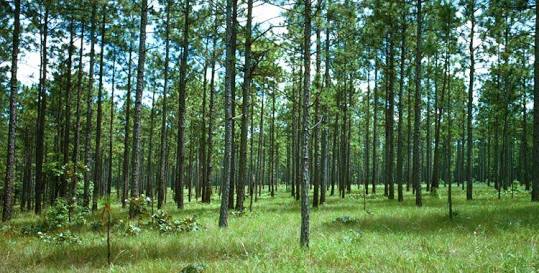Nyeko, a tree farmer in his plantation
Planting trees as a farming activity in Uganda for both business and conservation purposes has been embraced by people in different parts of the country.
Tree farmers in Hoima and Masindi districts in the Albertine region say that they have a common objective of getting paid from selling carbon credits from indigenous trees to local and International clients.
They add trees have become an attractive investment because of the rising cost of timber and the allure of carbon credits.
How Carbon Credit works
Carbon sequestration is the removal and storage of carbon from the atmosphere by trees, shrubs, and organic matter like soil.
When trees mature, they increase the absorption of carbon from the atmosphere.
When Farmers grow indigenous trees, clients of carbon calculate the growth and storage of carbon over time to accurately depict the carbon sequestration rate of trees and pay according to the cabin credits discovered. This business is both for environment conservation and making money while reducing green house emissions and earth warming.
Peter Nyeko, a businessman and member of Hoima Tree For Global Benefit (TGB) Farmers Group said that he invested Shs20 Million along with one partner in 20 hectares of trees and earned Shs3.2 Billion in less than 10 years.
The Masindi based farmer said that despite the work involved in clearing the land and caring for the trees, a tree bank is the best investment he could miss venturing into.
“You can invest Shs20 Million and in about 10 years, you’re harvesting trees worth about Shs3.2B Billion. You buy a seedling but once that seedling grows to become a fully grown tree in several years, you will get good money. As long as you’re willing to wait for a return on your capital employed, it’s pretty amazing. It’s just like a trust fund,” he said.
He however warns tree farmers to ensure the environment is well protected.
“There are some breeds which are really bad; they really cause a lot of destruction and should not be planted near the water. If we plant trees around water sources, it might dry up the water, then the water might never reach water bodies,” he said.
Beatrice Ahimbisibwe, an indigenous tree farmer in Hoima says that she conceived the idea of tree farming after witnessing tree farmers receiving million of shillings from carbon selling.
She adds that when she started planting trees in 2003, it took her less that 10 years to start selling carbon credits which she says has made it possible to sustain her family.
“I embarked on different indigenous tree species including Tanaria, Prynas, Fagara and Ficas. These are some of the species recommended for carbon credits,” Ahimbisibwe says.
She adds: “I started growing indigenous trees in 2003, but after a few years I started selling carbon credit and I can now have a sustainable family and have a decent home. People are coming from different places to see how we are able to do it.”
According to Ahimbisibwe, tree planting takes dedication and some patience for a few years but adds that the benefits are many including cash, environmental conservation, and soil erosion control.
“I was a subsistence farmer before I dedicated my time to tree farming project and started planting native and naturalized trees on my piece of land which eventually after being patient for a few years yielded through sequestering carbon dioxide, while the trees also helped curb soil erosion and keep water ways free from siltation,” she said

She further said that she visited different farmers who belonged to similar business of carbon selling to learn new skills.
After the visits, she said the she was advised to join a tree farming group to access a wider market.
She joined Hoima Tree For Global Benefit (TGB) Farmers Group and in 2018 she received Shs17Million from carbon credits in one harvest.
By Drake Nyamugabwa





